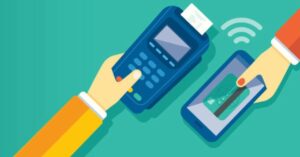You are aware of the importance of taking cashless payments in your company. You’ve probably heard of (and used) a variety of cashless payment options, including credit cards, Apple Pay, Google Pay, Bizum, and others. But what exactly are cashless payments in the modern digital age, and what are the benefits and drawbacks of allowing them in your place of business?
What are cashless payments?
Any form of financial transaction that is carried out without the exchange of actual cash is referred to as a cashless payment. Peer-to-peer (P2P), Buy Now, Pay Later (BNPL), bank transfers, credit and debit cards, mobile payments, digital wallets, peer-to-peer (P2P), and cryptocurrency payments are all included in this.
In the current digital era, cashless transactions are becoming more and more common among both consumers and enterprises. In fact, Spain has experienced the highest growth rate in contactless payments in Europe, and the rest of the continent is not far behind.
The pandemic accelerated the adoption of cashless transactions, but these contactless options continue to grow in popularity because of their many advantages, such as speed, convenience, flexibility, improved transaction history tracking and record-keeping, increased security, and lower costs for businesses (more on these benefits later).
Cashless vs. Contactless Payments
A more general term used to describe the numerous payment options that don’t involve physical contact between the buyer and the seller is “contactless payments.” Customers can tap or wave their cards at a point of sale to complete a purchase using tap-to-pay or EMV chip cards that use NFC technology, for instance, without coming into contact with a person or a machine.
Simply put, cashless payments refer to transactions that are completed without the use of actual cash or coins. Inserting a credit card into a card reader is a common example of a cashless payment, however, it is not contactless like Apple Pay or QR payments.
Types of Cashless Payments
- Credit and debit cards
- Cellular payments
- Digital and mobile wallets
- P2P (peer-to-peer) payments
- Digital currency from a central bank (CBDG)
- Bank transfer
- Buy Now, Pay Later
- Cryptocurrency
Benefits of cashless transactions
- Reduce costs and time.
- Increase sales
- Increasing client satisfaction
- Heightened security
- Improved transaction tracking and documentation
Drawbacks of cashless transactions
- Internet and technology usage dependence
- Fraud and hacking risk
- Possibility of privacy issues
- Implementation is more difficult for small enterprises
If digital payment systems failed, how would we cope?
Things that you thought were impossible 20 years ago are now on the cusp of becoming quite possible because of the rapid advancement of technology. The fundamental problem is that everyone is now so reliant on technology that they have no idea what to do if something goes wrong! Consider this: How would we react if digital payment systems failed?
Imagine that it is a late Friday night, that the workweek is over, and that the only obstacle to your meal is an empty refrigerator. You dash to the store to grab a few ingredients, swipe your card at the register, and leave. When the clerk informs you that there is a system malfunction and you cannot pay with a card, disaster hits!
Most likely, you’re sitting there dismissively. Can they really fall short?”
That card payment system can indeed fail as easily as your phone’s signal failing. But don’t worry, the world hasn’t yet come to an end, so you can still use money.
Even though the card payment systems were unsuccessful, this does not mean that the ATM systems were also unsuccessful. Go to the closest ATM, take out as much cash as you require, and then return to pay for your dinner.
Future of Cashless Payments
Cashless transactions appear to have a bright future as payment technology develops. Consumers are finding it simpler to make transactions using their mobile devices or wearables thanks to near-field communication (NFC), QR codes, and other contactless technologies. Future developments will make paying without cash or a physical card even simpler and faster.
Government programs are also fostering the expansion of cashless transactions. Many nations are promoting the use of cashless payments, such as digital wallets, and mobile payments, and the creation of new payment systems and infrastructure, to lower the costs and dangers involved with cash transactions.
The conventional banking and financial services industry will also be impacted by these shifts. To remain competitive and adapt to the evolving world of cashless payments, traditional banks will need to work with fintechs. Last but not least, the increase in cashless transactions will probably alter how customers handle their personal money, significantly reducing the need for actual cash in the future.
Conclusion
You are now knowledgeable about the many forms of cashless payments, their benefits and drawbacks, and how to get started.
Sincerely, the only backup for malfunctioning digital payment systems is cash. Cash is used everywhere. Anybody, regardless of age, gender, or socioeconomic circumstances, can utilize it anywhere.
Don’t get us wrong, technology is convenient, yet some people overspend because of this ease. The drawback of credit cards is how simple it is to carelessly overspend by “tapping” the contactless card till it is empty.
For smaller transactions, cash is still useful and will always be the fastest and most direct method of payment. It has technology again!





